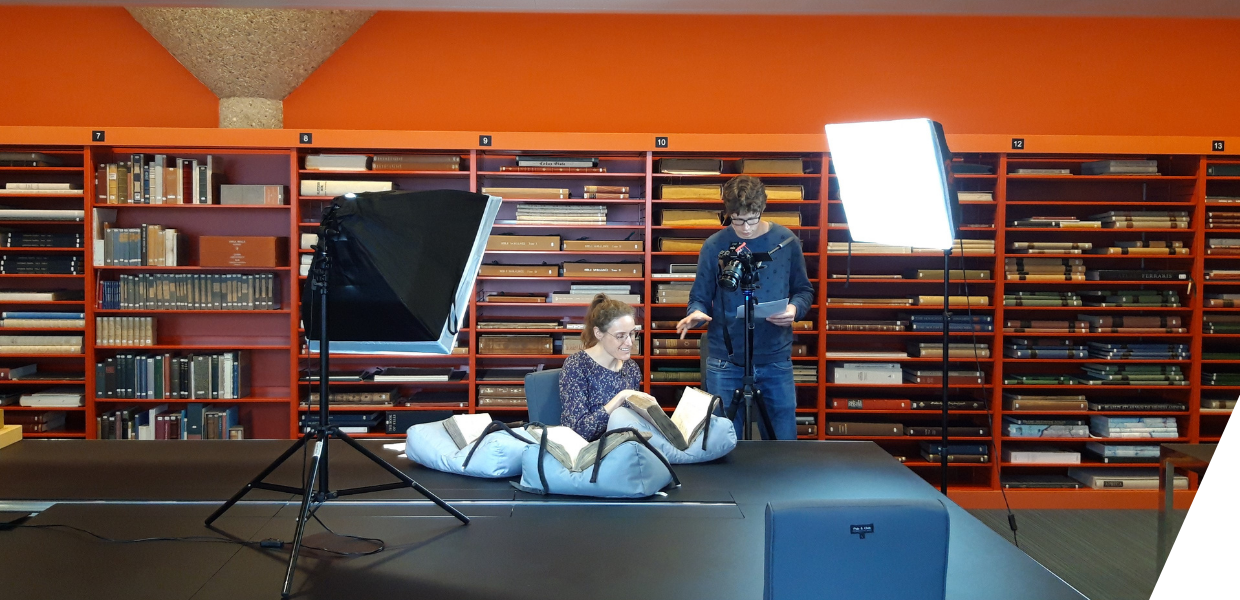Education within the ARMA project
The ARMA project, running until August 2022, aims to show how medieval reading culture evolved and became a fundamental aspect of European culture. So far, the project has seen around 28,000 items created between the years c.500 and c.1550 (medieval manuscripts, early printed books, coins and other objects) made available through the Europeana website.
One of the project’s goals is to show the education community the importance of books and reading in medieval culture. Partners have improved access, use and annotation of these objects via IIIF and created digital educational tools by curating content, writing editorials, producing a video series and designing learning scenarios. The project has taken an innovative approach to co-creating content by working directly with educators at non-formal institutions and with teachers, lecturers and students at schools and universities.
Three partners of the ARMA consortium were involved in the development of these materials for post-secondary education. They tell us more about how they worked to share the materiality of medieval digital objects and bring them to life for students.
Leiden University Libraries: an engaging video series
Leiden University’s manuscripts curator André Bouwman and ARMA officer Erik-Jan Dros describe what they did with manuscripts of the University library: ‘We made a video series in collaboration with Dr Irene O’Daly (Book and Digital Media Studies, Leiden University). She teaches her students about the contents and materiality of medieval manuscript books. With the series, we aim to introduce new audiences to the distant but fascinating world of the medieval manuscript book. In eight short videos, recorded in the Library’s Special Collections Reading Room, O’Daly presents the materiality of the codex from different angles, such as script, lay-out, traces of scribes and users.’
‘The videos help the viewer to experience part of the materiality of the manuscript book, such as form, size, but also sound, which is mostly lost in the traditional digitised form. We have incorporated some high-quality scans in the videos to show details that O’Daly discusses. In addition, every book she shows is made available as a digital facsimile by Leiden University Libraries on Europeana. This makes it possible to browse and view the manuscripts yourself, after watching the videos, for as long as you like, with ample opportunity to zoom in on details of your choice.’
‘Each video introduces one aspect of the materiality of the medieval manuscript book. With a maximum length of five - six minutes, they are ideal to watch in the classroom or at home by the students in preparation for a class.’
Staatsbibliothek zu Berlin: blogs and learning scenarios
Eef Overgaauw, manuscripts curator, and Markus Greulich, ARMA officer at the Staatsbibliothek zu Berlin, have contributed to the educational resources of the ARMA project with educational blogs and learning scenarios. ‘We edited several blogs like the Corbie Abbey and today’s font on Europeana that address both a wider audience and students in the field of higher education.’
‘These blogs are also connected to learning scenarios we created for BA students. These include Book inventories (and what they tell us about reading in monasteries): The 11th century book inventory of Corbie and Discovering online-resources (as well as ancient authors) through medieval manuscripts from Corbie Abbey. These scenarios highlight the importance of ancient and late antique authors for medieval monastic reading culture and teach students how to use a variety of online resources on ancient authors and texts.’
‘All the ARMA learning scenarios use the templates of the Teaching with Europeana blog to enable an easy integration into the Europeana educational network. The ARMA project partners are optimistic that a section for post-secondary education will soon complete the excellent website that is used by teachers and educators all over Europe.’
Bibliothèque nationale de France: worksheets, learning scenarios and tutorials
On behalf of the Bibliothèque nationale de France, Isabelle Breuil and Paloma Pucci created innovative educational resources for the ARMA project. ‘They are very much in line with recent projects developed at the BnF. Our two post-secondary learning scenarios, Manufacturing Manuscripts and Manufacturing the Printed Book explore the production of mediaeval manuscripts and printed books in the hopes of bringing these wonderful objects to life.’
`We were inspired by Markus Greulich, ARMA officer of the Staatsbibliothek zu Berlin, to adopt the inverted classroom approach, and decided to produce interactive worksheets, one for the Manufacturing Medieval Manuscripts lesson and another for Manufacturing the Printed Book. These give detailed information, with image close-ups and links to digitised manuscripts so that students can easily access and explore them from home. We were also very happy to be able to integrate the Leiden videos into our worksheet on medieval manuscript production, incorporating links to the videos in key places where students can benefit from seeing the manuscripts being handled.’
‘Our third learning scenario, Reading Medieval Coins, is aimed at primary level students. Inspired by our partners at Hunt Museum, we decided to incorporate an interactive online tutorial with a role-play activity in class to help kids explore how reading in the Middle Ages could occur in everyday objects such as coins. These learning scenarios are available in French as well as German.’
Use these resources
The video series, educational blogs, learning scenarios and galleries created for the ARMA project have been integrated into Europeana Classroom and are also available on the ARMA website. If you work in post-secondary education, we encourage you to explore them today. And if you don’t: look out for our next post about the work the project did for primary and secondary education!


